Since its introduction two decades ago, the MVP in software development has consistently been one of the crucial platforms. Convenient and low-risk, MVP is also a way to gather a maximum amount of verified information about the target audience with minimal effort. That’s why a multitude of beloved applications like Facebook, Spotify, Airbnb, and more have adopted MVP development.
So, what MVP stands for in software? What are MVPs’ software characteristics? How do you develop an MVP in software engineering? Let’s explore the answers to these questions in the following article.
What is an MVP in Software Development?
For many businesses, developing complete software before launching it to the market can incur significant costs and time. That’s why the minimum viable product software development comes into play. Simply put, an MVP is a version comprising the essential features of a product to be introduced to customers. Developing an MVP helps businesses gather feedback and gain a better understanding of market needs.
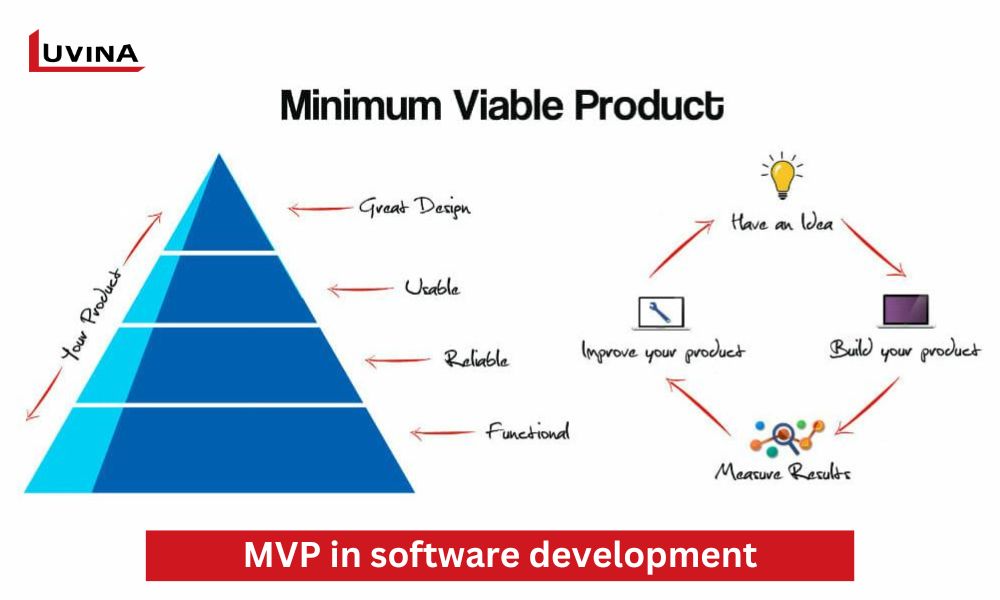
- – MVP for software development is highly suitable for companies testing innovative solutions.
- – MVP is not about releasing an incomplete product for users to try.
- – MVP is not a prototype or proof of concept.
- – Coding skills are not necessarily required to build an MVP.
Convenient, low-risk, and flexible, MVP serves as the foundation for many popular applications today, such as Facebook, Instagram, and Spotify. Take Instagram, for example. Initially, the app was not created for sharing photos. Users only used Instagram to capture photos, edit them, and add locations. Later on, the founders added the photo-sharing feature based on user demand.
It’s now easier than ever to share, like, and comment on images thanks to Instagram. Because of this, the app has amassed billions of users globally and is currently among the most popular social networks.
What are the 3 elements of MVP?
MVP full form in software development allows businesses to receive valuable early feedback from users to create a refined and more successful final product. To achieve this, MVP always focuses on the following 3 elements:
- Minimum: MVP includes only the most essential features, enough to meet user needs. The MVP product is always small and simple, adding new features after each update. For example, Snapchat initially was just an app for capturing and sending photos to others, later adding the feature of photos disappearing after a certain period.
- Viable: MVP is a product that fulfills a specific need, is immediately usable, and is user-friendly. For instance, Snapchat allows users to share photos instantly without the need to save them.
- Product: Despite being a scaled-down, simplified version of a final product, MVP in software development is fundamentally considered a product. MVP must be developed to target a specific user audience to gather feedback, explore the market, and improve the product based on real feedback.
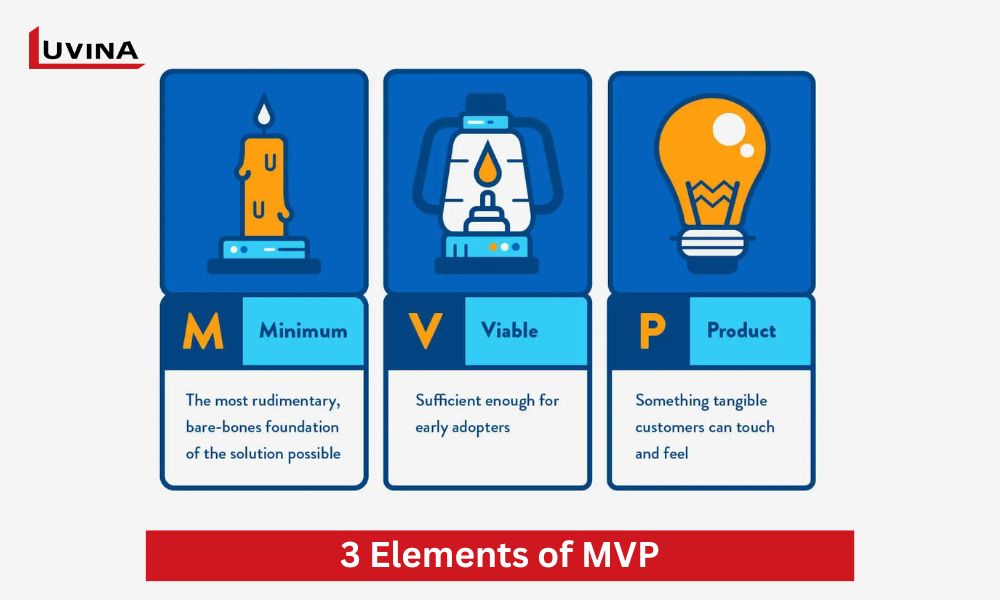
Key benefits of a minimum viable product
Not only does custom MVP development reduce the risk of creating unpopular software, but it also brings many benefits to businesses in software development. Here are some prominent advantages of MVP in software development:
- Focus on the Core Value of the Software: MVP software engineering focuses on minimal features, allowing businesses to concentrate on the core value of the software.
- Direct Market Feedback Collection: Software engineering MVP enables businesses to receive real-time feedback directly from the market. This helps businesses make improvements and upgrades according to customer needs.
- Validate Business Idea Feasibility: If you are unsure whether your software suits the target audience, MVP will help you determine that. Thanks to MVP for software development, businesses can have more confidence in their product.
- Time Savings: MVP allows the development team to receive immediate feedback from the market for quick adjustments and updates. With more frequent updates (compared to monthly updates as before), your project will progress faster.
- Budget-Friendly: MVP is budget-friendly as it helps businesses validate their business ideas before investing extensively. It is a way to achieve the best results with the lowest cost.
- Easy Future Development Planning: MVP collects user feedback for improvements. Therefore, businesses can easily identify what is effective and what is not to adjust future development plans.
- Attract Investors Easily: MVP in software development is associated with innovative, unique, and breakthrough products. Therefore, potential investors are often interested in MVP products, increasing the chances of your project receiving investment.
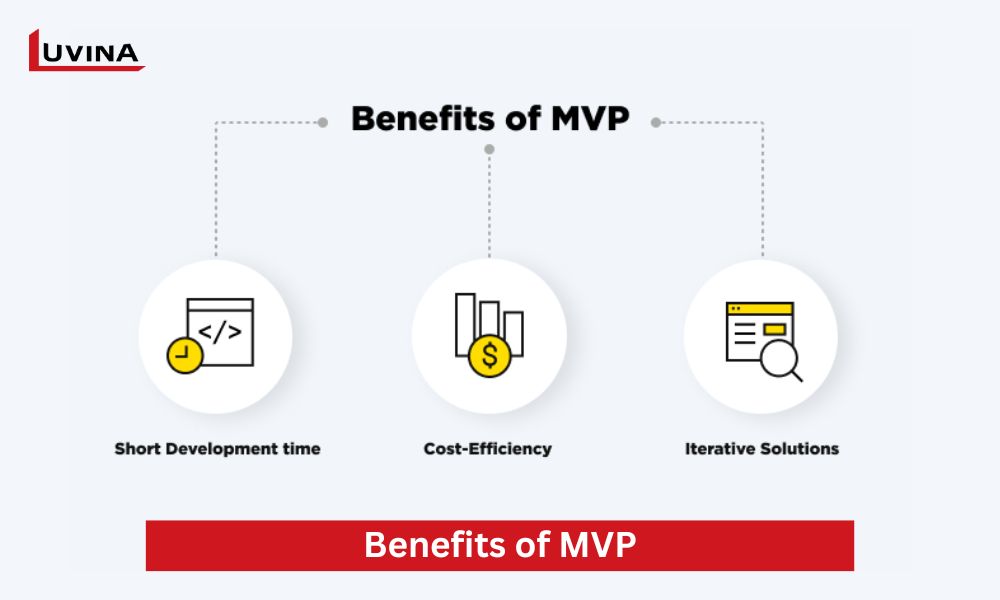
MVP vs. Prototype vs. PoC: What’s the Difference?
The concepts of Proof of Concept (PoC), Prototype, and the meaning of MVP in software development are often confused with each other. However, it’s important to clarify that these are 3 completely different concepts:
Proof of Concept (PoC) is usually developed as an internal project in the pre-product stage (before the official development of the product). PoC development helps verify the technical feasibility of a business idea. It aims to reduce the risk of technical issues during software development.
Prototype is a visual representation of a product. It allows potential users (and investors) to see how the product’s interface will look to minimize the risk of user dissatisfaction with the software. A prototype may be clickable and interactive, but not always fully functional.

On the other hand, MVP meaning in software development is a complete product with minimal (but essential) features for the first customers to use. MVP in software development helps businesses understand if customers like the software, and are willing to use (or pay to use) it. MVP helps businesses reduce the risk of wasting resources during software development.
In a software development process, PoC is the earliest stage, followed by the prototype, and finally, the Minimum Viable Product software development.
Steps to develop MVP in Software Development?
By now, you probably have a clearer understanding of MVP meaning in software development. So, how do you go about developing an MVP? Each team may have a different process, but the basic MVP development process is generally divided into the following 6 steps:
Step 1: Identify the purpose of the software
Surveys have shown that up to 1/3 of startups fail because no one needs their product. Therefore, you need to know if the market needs your software by identifying the target audience, their problems, and how your software solves that problems. To gather this information, you can use various methods such as interviewing customers or conducting online surveys.
Step 2: Market research
This is the step of MVP in software development where you need to analyze the target customers, estimate the market size, and assess the competitive landscape. To stand out in the market, your product must be unique. If your competitors already have similar products, find ways to make your software more distinctive.
Additionally, don’t forget to analyze similar software ideas that may have failed in the market to understand the reasons and avoid pitfalls.
In this stage of MVP software development, you can also map out the user journey to experience the product from the perspective of potential users. By identifying the challenges customers may face in the user journey, you can pinpoint potential areas for product improvement.
Step 3: Identify core features
You probably already know what features your final product should have. However, MVP in software meaning is the minimum viable product. Therefore, you need to determine which features are the most crucial and should be prioritized for inclusion in the MVP. You can identify these essential features after analyzing the user journey in step 2.
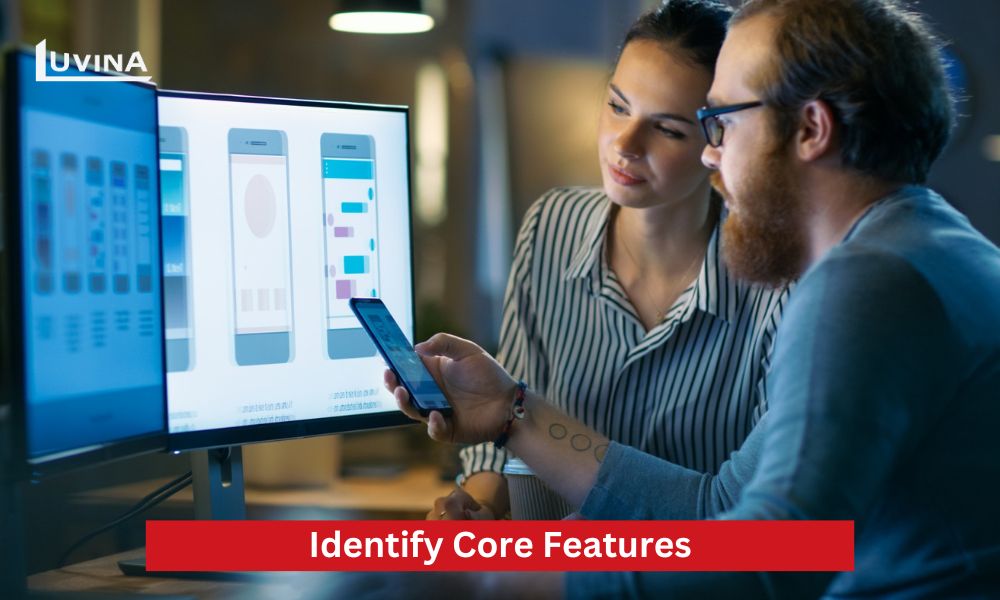
For example, an MVP for a music streaming website may need core features such as Account Creation, Song Catalog, Search Functionality, Streaming Player, Playlist Creation, User Profile, and some social features like sharing songs and following other users. Additional features can be added later.
Step 4: Create a prototype
This is a crucial step of MVP in software development that businesses should not overlook. After creating a prototype, present it to users to assess the product’s level of interest and use their feedback to improve the prototype. This process is vital in shaping the design and functionality of the MVP and estimating software development costs.
Step 5: Create an MVP
In this step, you’ll start building the MVP with the core features you identified earlier. There are three ways you can develop an MVP:
- No-Code MVP in software development
Not every MVP requires coding. Some products only need the creation of a landing page with a product description and a call-to-action button. For example, Dropbox once made a short video introducing all the product features, receiving valuable feedback from customers and potential partners.
- DIY (Do-It-Yourself) MVPs software
Even if you don’t have extensive IT skills, you can still create a software MVP using drag-and-drop tools. This approach is suitable for MVPs with relatively straightforward core functionalities. While the software’s smoothness and responsiveness may not be optimal, it still meets the needs of many startups.
- Hire an MVP Development Team
This is the most reliable way to develop an MVP. You can either search for suitable developers on hiring platforms or collaborate with an IT outsourcing company. These companies will assemble a full team, including business analysts, UX/UI designers, developers, and testers.
If you’re looking for a dedicated team to support MVP development, contact Luvina. Our talented specialists have collaborated with numerous businesses, large and small, and are committed to providing you with the highest quality MVP development service.
Step 6: Collect feedback and continuously update
The feedback you receive from customers will help you identify which features need to be changed, improved, or removed. In this step of Minimum Viable Product Software Development, to collect feedback, you can:
- – Incorporate a direct feedback button within the application.
- – Encourage customer feedback through email and social media.
- – Conduct voluntary surveys (users sharing which features they like or dislike).
- – Utilize analytics tools to track user behavior and engagement levels.
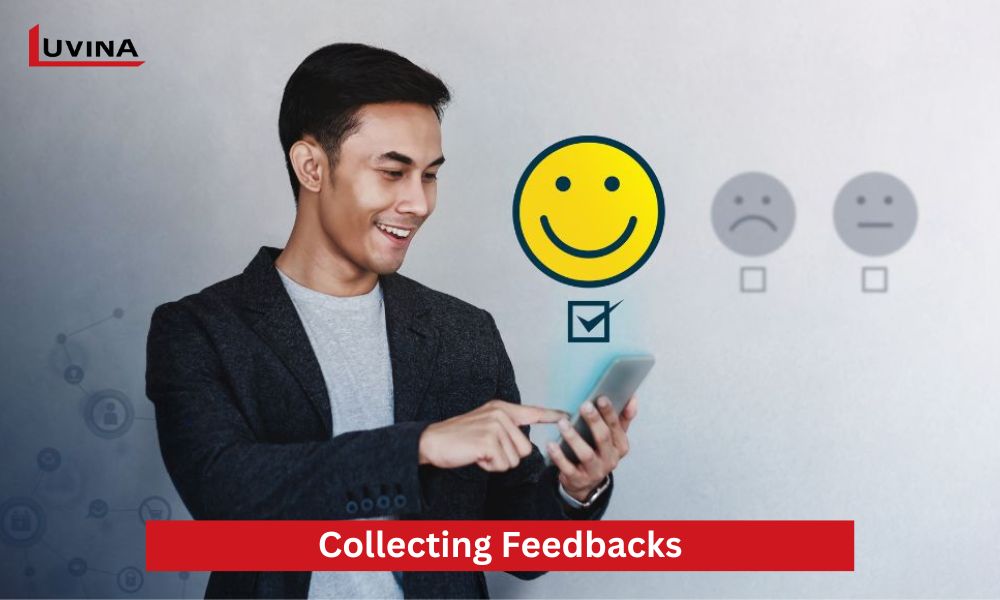
Conclusion
Here is a detailed explanation of MVP meaning software development and how to create an MVP. In an era where MVP is considered a decisive factor for the success of a digital product, your business should not overlook this highly flexible and time-efficient development approach.
Hope this article has provided you with a comprehensive understanding of MVP software development’s meaning. Contact Luvina to learn more about MVP in software development today if you want to gain significant advantages in the market.









Read More From Us?
Sign up for our newsletter
Read More From Us?
Sign up for our newsletter